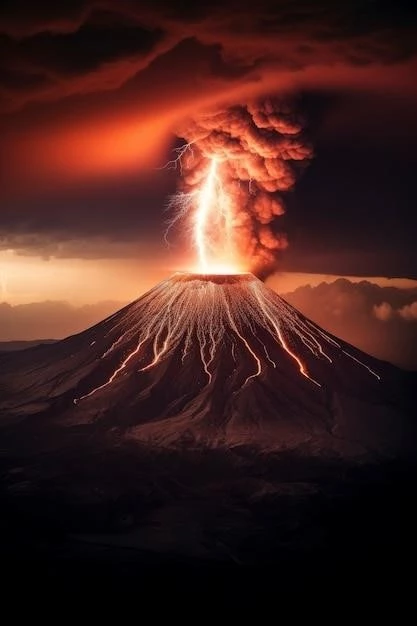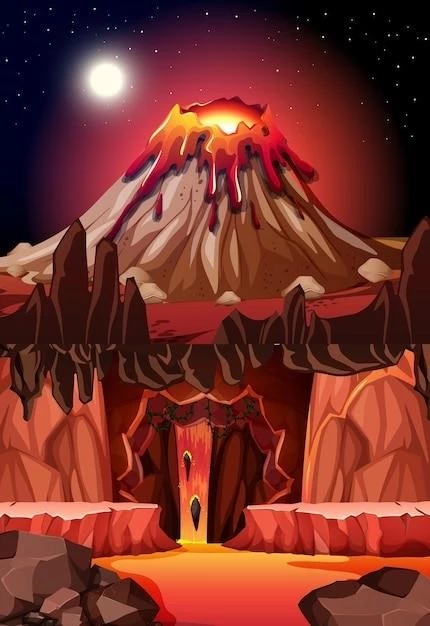Volcanoes: Windows to the Earth’s Core
As an avid geology enthusiast, my fascination with volcanoes knows no bounds. These fiery mountains, spewing forth molten rock and ash, are not just awe-inspiring displays of nature’s power but also offer us invaluable glimpses into the Earth’s fiery heart. Recently, I had the opportunity to witness the raw power of a volcano firsthand, an experience that left an indelible mark on my understanding of these geological marvels.
My Journey to the Heart of a Volcano
My journey took me to the foothills of Mount Etna in Sicily, Italy. Towering over the landscape, Etna is one of the most active volcanoes on Earth. I joined a group led by experienced volcanologists, our excitement palpable as we ascended the slopes.
Our first stop was a solidified lava flow from a previous eruption. As I touched the cooled, jagged rock, I was struck by the immense force that must have been required to push this molten river across the landscape. The air was thick with the pungent smell of sulfur, a stark reminder of the volatile forces at work beneath our feet.
Unveiling the Earth’s Layers
Standing on the rim of a dormant crater, I gazed into the abyss. It felt as though I was staring directly into the Earth’s core. The volcanologist explained that volcanoes are formed where the Earth’s tectonic plates collide or separate, creating pathways for molten rock, known as magma, to rise from the mantle, the layer beneath the crust.
He pointed out the different types of volcanic rock scattered around us, each telling a story about the volcano’s history and the composition of the Earth’s interior. I learned that by analyzing these rocks, scientists can glean insights into the temperature, pressure, and chemical makeup of the Earth’s mantle, information that would be impossible to obtain through any other means.
The Eruptive Power of Volcanoes
Later that day, we witnessed a minor eruption. The ground trembled beneath our feet as a plume of ash and gas shot skyward, followed by a stream of glowing lava. It was a humbling reminder of the immense power that lies dormant beneath the Earth’s surface.
The volcanologist explained that volcanic eruptions, while destructive, play a crucial role in shaping our planet. They release gases trapped within the Earth, contributing to the formation of our atmosphere. Over millions of years, volcanic activity has created new landmasses and enriched the soil, making life on Earth possible.

Volcanoes: A Source of Knowledge and Wonder
My encounter with Mount Etna was an unforgettable experience. It deepened my appreciation for the raw power of nature and the intricate processes that have shaped our planet over billions of years. Volcanoes are not just geological wonders but also windows into the Earth’s hidden depths, offering scientists invaluable clues about the forces that continue to mold our world. As I left Etna behind, I carried with me a newfound respect for these fiery mountains and the secrets they hold.

Beyond the Surface: Studying Volcanic Activity
My journey ignited a thirst to learn more about how scientists study volcanoes. Here are some key methods they employ:
1. Seismic Monitoring
Volcanoes often give warning signs before they erupt. Scientists use seismographs to detect earthquakes, which increase in frequency and intensity as magma rises within a volcano.
2. Gas Analysis
Changes in the composition and volume of gases released from a volcano can also signal an impending eruption. Scientists collect gas samples and analyze them for changes in carbon dioxide, sulfur dioxide, and other volcanic gases.
3. Ground Deformation
As magma accumulates beneath a volcano, it can cause the ground surface to bulge or deform. Scientists use GPS and satellite imagery to monitor these subtle changes in ground shape.
4. Studying Volcanic Rocks
By analyzing the composition and age of volcanic rocks, scientists can reconstruct a volcano’s eruptive history and understand the processes that occur deep within the Earth’s mantle.
Conclusion
Volcanoes are a testament to the dynamic forces that have shaped our planet for billions of years. They are windows to the Earth’s core, providing us with invaluable knowledge about its internal structure and processes. As we continue to study these fiery mountains, we gain a deeper understanding of our planet’s history and the powerful forces that continue to shape our world.










